Home » Journal Articles » Travel » Art in Other Places: Permanent Exhibition of Henry Moore’s Plasters Art Gallery in Ontario – March/Apr 2000 – Jan/Feb 2000
In November I traveled to Quebec to attend a conference. On the way, I stayed overnight in Toronto, where I met with a potential agent and visited the Art Gallery of Ontario. In 25 years of living in Canada, I had not seen the permanent exhibition of Henry Moore’s large plasters there, although I had read an excellent account of it in R. Berthoud’s The Life of Henry Moore (1987. Dutton). I was a bit skeptical of a roomful of plasters, though. I had seen a large retrospective of Moore’s bronze sculptures and wooden carvings at the Metropolitan Museum of Art in New York City, seen many of his large bronzes in various cities, and regularly enjoyed books and photographs of his work in my own home. Last spring I spent an afternoon with a tall Moore bronze in the courtyard of my brother’s kitchen on an olive oil ranch in California. What more could a roomful of plasters add to all that? They added a lot, I want you to know, and I’ll try to show you how.
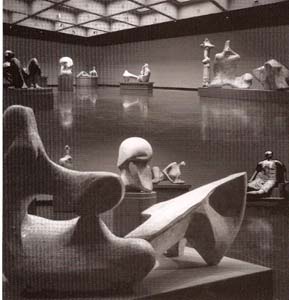
First are the obvious things that everyone expects in every exhibition. And this exhibition satisfies them all superbly (Fig.1). There is lots of great art (132 sculptures and 73 drawings at the AGO; 900 Moore works in all). The plasters are displayed thoughtfully in a large, well-designed space, with lots of room between them, under an interesting combination of artificial and natural light. When so many good pieces are arranged in such interesting ways in relation to each other, the collection as a whole affords many opportunities to explore relationships among forms from different viewpoints. And when they are all by the same artist, the effect is stunning. When I visited there were so few other people that I felt alone with Henry Moore and his work. The overall effect at the time was that nothing else in the world existed for me but those forms.
Although there are fewer of Moore’s sculptures in Toronto than of Brancusi’s in Paris, fewer than of Milles’ in Millesgården, and fewer than of Ng Eng Teng’s in Singapore, this still must rank among the world’s best collections of work by a single sculptor, and all of it in this room is massive. In addition to the plasters, there are at least five other Moores in other rooms in the Gallery, in a both bronze and wood, and an enormous walk-through bronze piece on the street corner outside. Even without so much of his other work nearby, seeing so many of Henry Moore’s sculptures in the same room was something I will never forget, and I recommend it to anyone.
Those are the obvious things, and they alone would make for a memorable experience. Surprisingly, though, the best things for me were that the pieces are all in the same medium and that they are of plaster. These two factors conspire to emphasize form, and form is what I experienced. More than that, I experienced a family of forms, imagined and executed at different times in the life of a great sculptor. Because plaster is wonderfully responsive to light, it affords an exquisite sense of form. When it is well lighted, the scale of light intensity ranges from pure white highlights to pure black shadows, and the jump from white to black at edges is sharp. Highlights, shadows, and the range between them all vary wonderfully, both directly and in reflections on the floor. The exhibition is brilliant, literally. The sculptor, the architect (and his assistant, Henry Moore), and the curator (with Henry Moore) saw to that.
Another thing that greyscale did for me in this show was to enhance the effect of tool marks. Much more than I have ever experienced with bronzes, tool marks really did it for me in Toronto. Often, especially with Moore’s massive works, his tool marks are swamped by the scale of the sculpture and overpowered by the smooth, tense surfaces that loop through space on greater-than-human scale, dominating them and making them appear more as scratches than as design elements. But not with the plasters. There can be no doubt about the tool marks on them. They record, on human scale, intentional movements of Moore’s body as he worked. Over the decades since Moore made the plasters at his country home in England, including the 25 years they have rested together in one room in Canada, everything has acquired patina. Some plasters are still nearly white. Most are one or another shade of ivory, much more white than yellow. But the scratches are dark, stained with dirt from the English countryside, with urban dust from Ontario, and perhaps with a bit of oil from Moore’s own hands.
The fact that each piece is lighted both naturally and artificially modulates the power of greyscale to evoke a sense of form, lending even more power to perception. The grey autumn morning bathed the exhibition in a soft, spectrally white natural light, through at least a hundred large, flat, frosted skylights recessed deeply into the ceiling in quartets (Moore himself designed this feature). More subtly because of the relative brightness of the sky under that day’s conditions, a warmer artificial light also bathed the plasters from somewhat different angles. This illuminated each piece by lights of slightly different colours at the same time, modeling it in two ways at the same time (it would be interesting to view a plaster in Terry Kramer’s light box under two colours of lights).
Someone once told me that all sculptures should be white. Sculpture is about form, she said, not colour, and only white, featureless media can provide full light intensity gradients or full modeling of form. I resisted that dictum at the time. I was into wood, fascinated by the ability of its laminar structure to enhance form, and I lusted after banded stones for the same reason. Much later in Rome, surrounded by literally thousands of pure white marble sculptures from every century, I began to appreciate it. In Toronto, the lesson really soaked in and I got it.


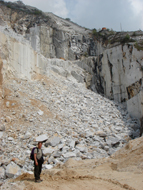

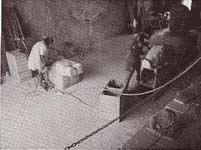
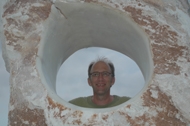
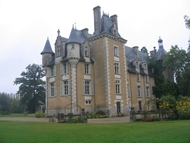

We need some kind of descriptive text here.